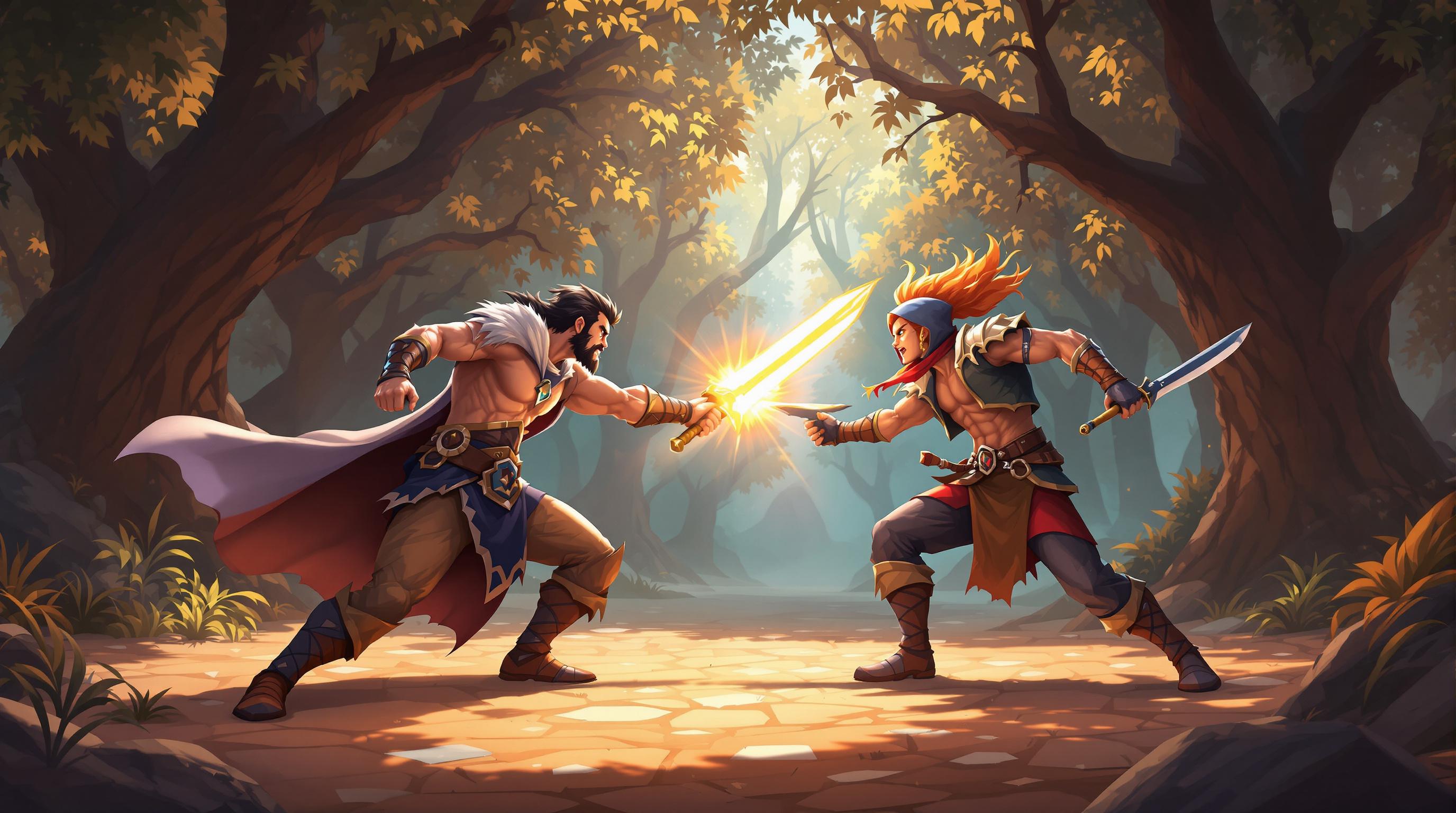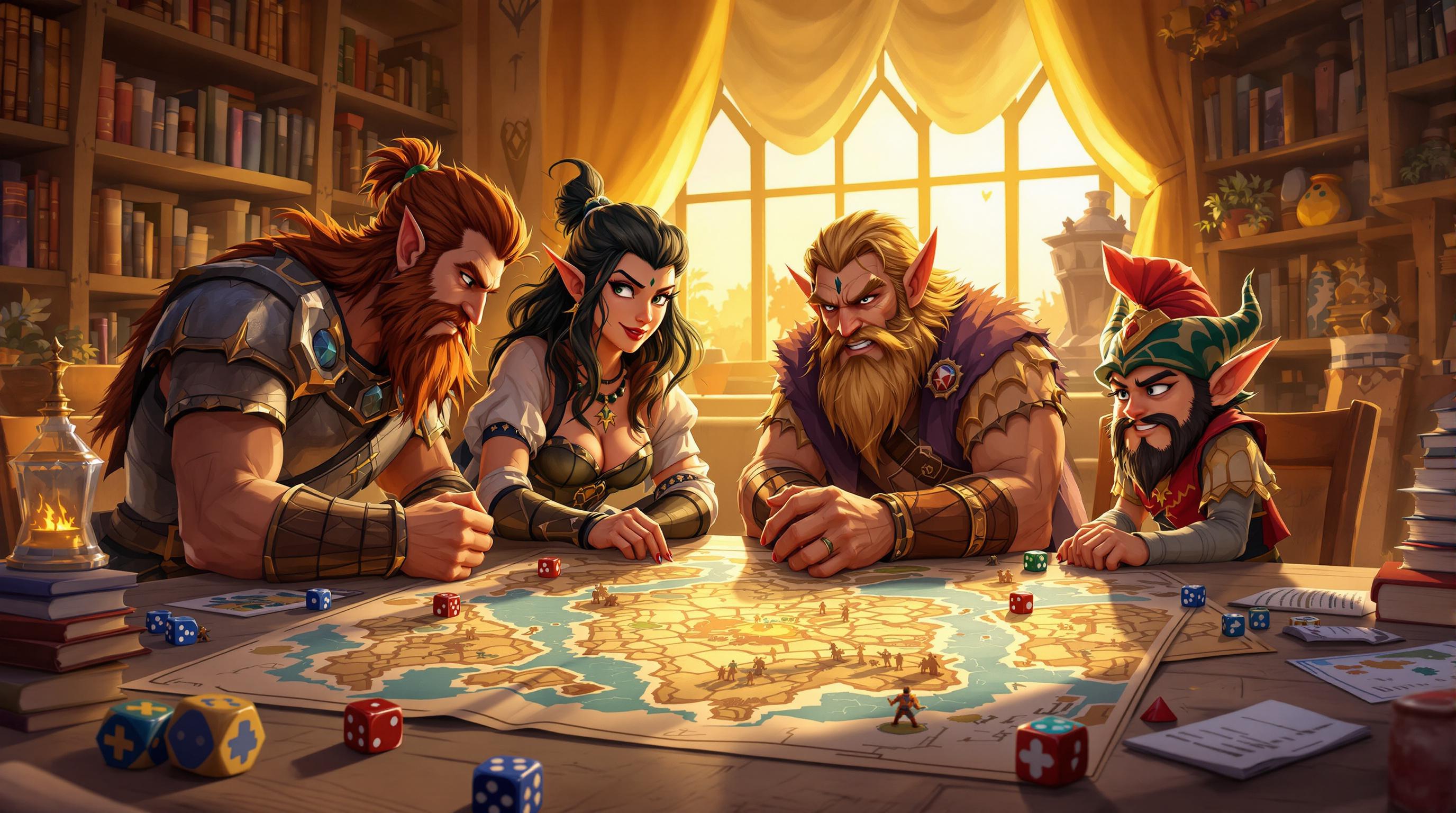Want to create better homebrew rules for your tabletop RPG? Start by involving your players. Their feedback can help you balance mechanics, improve clarity, and enhance gameplay flow. Here's how:
- Collect Feedback: Use surveys, post-session chats, and online forums to gather player input.
- Analyze Trends: Identify repeated issues like balance problems or unclear rules.
- Test Changes: Introduce adjustments gradually during playtesting sessions.
- Collaborate: Involve players in rule creation and keep everyone updated with shared documents.
Creating Homebrew Content in RPGs!
Ways to Collect Player Feedback
Gathering feedback is the first step in turning your homebrew rules into mechanics that improve gameplay. To get useful insights, it's important to use a variety of methods to capture different perspectives.
Using Surveys to Gather Input
Surveys are a great way to collect structured feedback. Include a mix of question types:
- Rating scales to measure satisfaction (e.g., "Rate the effectiveness of the new critical hit rule").
- Open-ended questions for detailed input (e.g., "What challenges did you encounter with the new spell creation system?").
- Multiple-choice questions to identify patterns (e.g., "Which aspect of the new crafting rules needs the most adjustment?").
Keep surveys short - 5 to 7 focused questions work best to maintain attention. Tools like Google Forms or Survey Monkey make creating and sharing surveys easy.
Talking with Players After Sessions
Post-session chats allow you to gather immediate feedback while the session is still fresh in everyone's mind. Create a relaxed atmosphere to encourage honest responses. Ask targeted questions about how specific homebrew rules influenced the session's gameplay.
Getting Input from Online Communities
Online spaces like Reddit (e.g., r/DnDBehindTheScreen), Discord servers, and game design forums are excellent for feedback and comparisons. Platforms like the TTRPG Games Directory can help you find communities to share your rules and see how they stack up against others.
After collecting feedback through these channels, the next step is to analyze the input and refine your homebrew rules accordingly.
How to Use Feedback to Improve Rules
Once you've collected feedback, the next step is figuring out how to analyze and use it to improve your homebrew rules.
Spotting Trends in Feedback
Pay attention to issues that come up repeatedly in player feedback. These often point to areas that need fixing right away. To make sense of the feedback, organize it into categories:
| Feedback Type | What to Watch For | Priority Level |
|---|---|---|
| Game Balance | Overpowered abilities, unfairness | High |
| Rule Clarity | Confusion, misinterpretations | High |
| Gameplay Flow | Pacing problems, timing issues | Medium |
| Fun Factor | Player engagement and enjoyment | High |
For instance, if multiple players mention that a new critical hit rule drags out combat, that's a clear sign the rule needs simplifying. Once you've identified the main problems, you can start making adjustments and testing the changes.
Testing and Tweaking Rules
Introduce changes gradually during playtesting sessions. This lets you see how specific adjustments affect the game without overwhelming players. When testing new rules, keep these tips in mind:
- Try the rules in controlled scenarios to see how they work in practice.
- Record player reactions and compare results to your original goals.
- Make small, focused changes rather than overhauling everything at once.
Aligning Rules with Game Mechanics
New rules should work with the existing game system, not against it. Here are some key points to consider:
- Keep new rules consistent with the core mechanics and easy to use.
- Avoid rules that slow down gameplay significantly.
- Ensure players still have meaningful choices, but prevent loopholes or exploits.
If you're tackling a more complex rule change, check out resources like the TTRPG Games Directory to see how similar mechanics function in other games. Balancing your rules with the game's mechanics ensures that any changes improve the experience without throwing off the core gameplay.
sbb-itb-b8b00a5
Tips for Working with Players on Homebrew Rules
Involving Players in Rule Design
Host session zeros specifically to create homebrew rules together, ensuring they align with the group's preferences. Use tools like Discord or online forums to keep the conversation going and gather feedback over time. Involving players in the process not only improves the rules but also gives everyone a sense of shared investment in the game.
Being Open to Changes
Stay flexible when trying out homebrew rules. Keep a document that tracks changes and notes how they affect gameplay. If players raise concerns, address them quickly and don’t hesitate to tweak or remove rules that aren’t working.
Here’s a simple approach to manage rule changes effectively:
| Phase | Action | Timeframe |
|---|---|---|
| Initial Discussion | Share the rule idea and collect feedback | Before a session |
| Trial Period | Test the rule during gameplay | 2-3 sessions |
| Review | Evaluate player feedback and rule impact | After sessions |
| Adjustment | Make changes or remove the rule | Between sessions |
Keeping Rules Consistent
Store all homebrew rules in a shared document to avoid misunderstandings and ensure everyone is on the same page. Double-check how these rules interact with existing mechanics to prevent conflicts or confusion.
"Every game master is a game designer", says Matt Colville, highlighting the importance of creating rules that improve rather than disrupt the game [2].
To maintain consistency, focus on aligning new rules with the core mechanics, documenting how they fit, and reviewing them regularly. For complex systems, explore resources like the TTRPG Games Directory to learn from similar mechanics in other games.
Once your rules are consistent and well-integrated, you’ll be better prepared to explore additional tools and resources to refine your homebrew designs.
Resources to Help with Homebrew Design
Using Tools and Directories for Ideas
The TTRPG Games Directory is a great starting point for discovering a variety of game mechanics. It allows you to explore tested ideas that you can incorporate into your homebrew creations. Different types of resources can assist at various stages of your design process:
| Resource Type | Purpose |
|---|---|
| Game Directories | Compare mechanics and find inspiration |
| Design Tools | Keep track of rule changes and updates |
| Community Forums | Get feedback from seasoned players |
Community forums, in particular, are a reliable place to gather playtesting feedback and refine your ideas based on real-world experiences.
Insights from Experienced Creators
Engaging with seasoned homebrew designers through blogs, guides, and online communities can provide invaluable inspiration. Many creators share practical examples and tips that can help you avoid common pitfalls.
"Successful homebrew design focuses on how rules impact player experience" [1]
Take time to study how these creators document their rules, run tests, and make adjustments. Using collaborative tools can make it easier to collect feedback and prioritize changes, ensuring your design evolves in the right direction.
Conclusion: Building Better Rules with Player Input
Key Takeaways
Creating effective homebrew rules starts with collaboration and gathering input from players. Tools like surveys, group discussions, and online forums are great ways to gather feedback. A clear process for reviewing this input helps craft rules that enhance gameplay. Striking a balance between adaptability and consistency ensures the rules fit your group's playstyle [1][2]. Resources such as the TTRPG Games Directory can also be helpful when designing balanced and engaging rules.
The true measure of successful homebrew rules is how well they incorporate player feedback and create a collaborative gaming experience.
Thoughts on Teamwork
Involving players in the rule-making process leads to rules that are practical and tailored to the group's preferences [1][3]. Using feedback effectively allows DMs to refine and simplify rules for better gameplay.
For more ideas, resources like the TTRPG Games Directory offer insights into different mechanics and systems. Keeping lines of communication open and being willing to adjust ensures that homebrew rules meet the needs of the group while staying true to what makes the game enjoyable [1][2].


